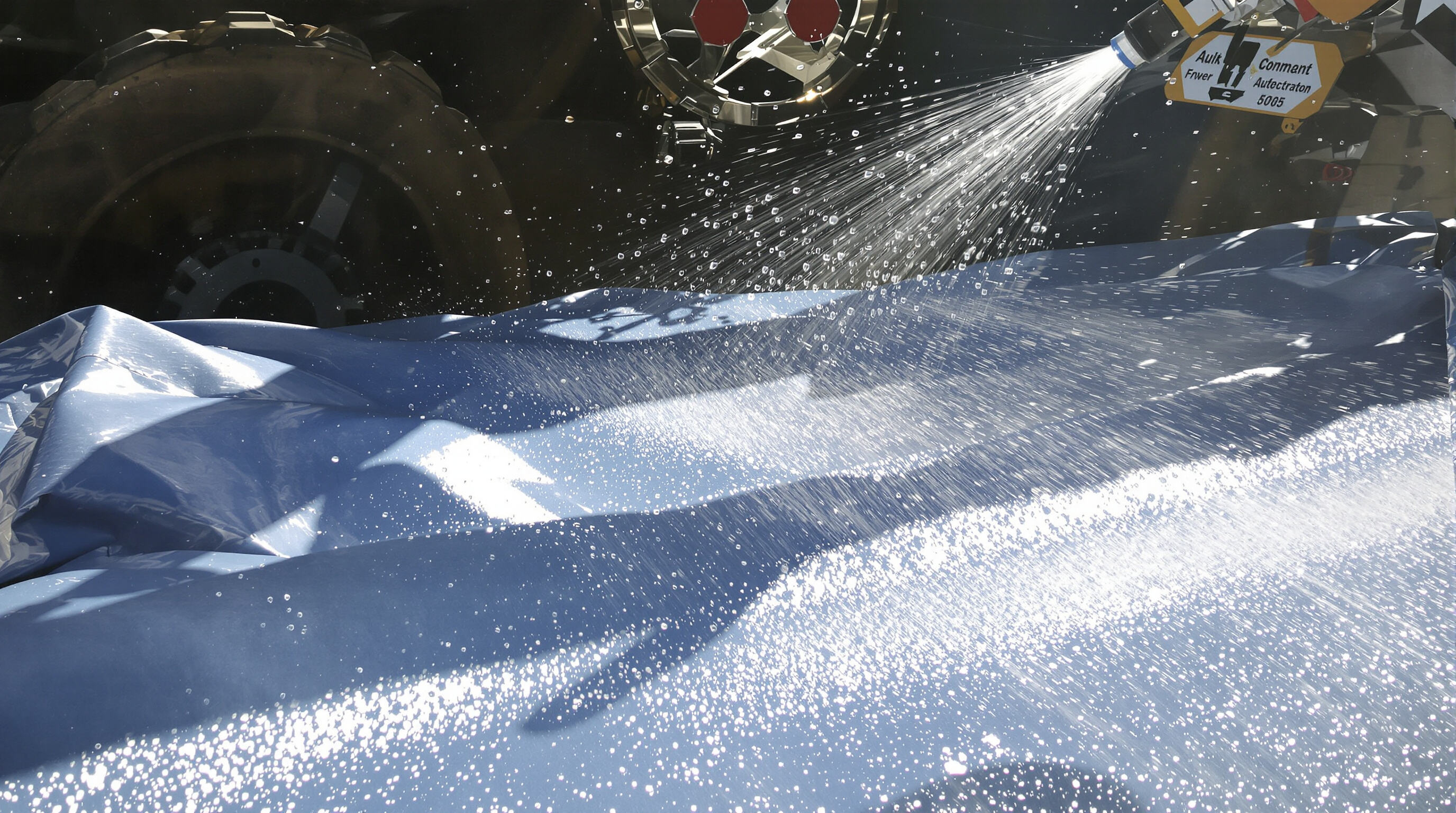Choosing the Right Tarpaulin Roll for 2025
Understanding Tarpaulin Roll Specifications: Thickness, Weight, and GSM
Tarpaulin Thickness and Weight (Mils and GSM): What They Mean
Tarpaulin roll performance depends on three key specifications: thickness (measured in mils), weight, and GSM (grams per square meter). A mil—1/1000th of an inch—indicates puncture resistance, while GSM reflects material density. Industry benchmarks classify tarps with 250+ GSM as heavy-duty, capable of withstanding wind loads over 50 mph.
Tarps that are thicker, around 12 to 18 mils thick, usually match up with fabrics weighing between 300 and 600 grams per square meter. They strike a good middle ground when it comes to how tough they are against tearing versus how flexible they remain. Construction workers find this really important because these heavier duty tarps resist wear and tear so much better. According to Market Insights from last year, this durability actually cuts down on replacement costs by roughly 30 to 40 percent. On the flip side, lighter weight tarps at about 6 to 8 mils thickness (around 100-150 GSM) work fine for things like covering dirt temporarily but won't last nearly as long when exposed to sunlight. Studies show they break down about 70% quicker under UV light compared to their heavier counterparts. Most of these characteristics come from multiple layers of polyethylene coating applied during manufacturing. Each additional 0.1 millimeter layer added to the tarp increases its weight by approximately 50 grams per square meter without compromising its ability to keep water out completely.
How GSM and Thickness Selection for Tarpaulins Impact Performance
GSM directly influences longevity. A 180 GSM tarp typically lasts 12–18 months in outdoor conditions, whereas 350 GSM variants can endure for five years or more. Thickness affects load capacity: 14-mil tarps support up to 200 lbs per square foot without sagging, making them ideal for snow-prone environments.
Comparing Mils and GSM Across Tarpaulin Roll Types
Polyethylene (PE) tarps generally range from 8–12 mils (150–220 GSM), while PVC laminates reach 18 mils (600+ GSM). Canvas tarps differ fundamentally—woven cotton at around 300 GSM offers breathability but requires chemical treatments for water resistance.
Industry Standards for Heavy-Duty Tarpaulin Thickness (Measured in Mils)
ASTM D378-19 requires industrial tarps to be at least 14 mils thick, ensuring tear strength exceeds 50 lbf. Military-grade tarpaulins exceed 20 mils and often include polyester meshes for enhanced durability. Notably, some European standards emphasize GSM over mils, creating challenges in cross-regional procurement.
PVC, Polyethylene, and Canvas: Comparing Tarpaulin Materials for 2025
Types of tarpaulin materials (PE, PVC, canvas) and their use cases
Tarpaulin rolls come in different materials, each designed for specific jobs depending on what they need to protect. Polyethylene tarps are budget friendly and light weight, great for covering things temporarily at construction sites or just tossing over camping gear when it rains. Then there's PVC material which really stands up to water and tears, so these tend to last much longer in industrial settings where heavy machinery needs shelter from weather damage. Canvas options are another story altogether since they're made from thick cotton or polyester weaves that let air pass through naturally. This breathability matters a lot when storing hay or other agricultural products that can rot if trapped in damp conditions. Most folks in the trade will tell anyone looking for tarps that polyethylene works best for short term stuff less than a year, while PVC lasts about five years minimum. And whenever condensation becomes an issue, canvas remains the go to choice despite being heavier and pricier than alternatives.
Polyethylene vs. PVC tarpaulin rolls: Durability and cost analysis
When it comes down to it, polyethylene (PE) and polyvinyl chloride (PVC) offer very different bang for your buck. Sure, those PE tarps are going to set folks back about half what they'd pay for PVC, but don't expect them to stick around long if things get even moderately rough outside. We're talking replacement every year or two at best. On the flip side, PVC stands up to the elements for much longer time frame - somewhere between five to seven years even when conditions turn harsh. Tests from Industrial Material Reports back this up, showing PVC can handle tears with three times the strength of PE materials. Looking at the big picture, spending extra upfront on a $150 PVC tarp actually makes financial sense since it avoids having to keep buying those cheaper $50 alternatives again and again. Temperature resistance is another area where PVC shines too. While most PE starts getting stiff around 100 degrees Fahrenheit, good quality PVC stays pliable all the way up to 140°F (or 60°C for our metric friends).
Canvas tarpaulins: Breathability and traditional applications
When it comes to materials that let air flow through, canvas really stands out. The way it's woven allows moisture to escape instead of sitting there and creating problems. According to some research from 2023 looking at agricultural covers, this actually cuts down on mildew growth by about 63% when compared with those plastic alternatives we see everywhere these days. Farmers love using it for storing grains because it keeps things dry, ranchers put it over their animals' shelters where ventilation matters a lot, and event planners swear by it for big tents at festivals or weddings. Sure, natural fibers like cotton won't last as long as synthetics do. Most folks find they need to treat canvas again after around two growing seasons. But there are still benefits worth considering. Canvas drapes nicely which looks better than most other options, plus it breaks down naturally over time if disposed of properly. Some newer types even come with special silicone treatments that keep rainwater out while still letting fresh air circulate through.
Waterproof and UV-Resistant Features in Modern Tarpaulin Rolls

Waterproof and Weather-Resistant Properties: Coating Technologies Explained
Today's waterproof tarps depend on sophisticated coating technologies that blend materials science with good old engineering know-how. The latest multi layer PE and PVC coatings come with special water repelling ingredients plus those tiny protective barriers that stop moisture from getting through. These modern coatings can handle being submerged for hours without letting any water in, though nobody claims they're absolutely 100% waterproof in every possible situation. When it comes to industrial applications, the thickness really matters. A thicker 12 mil PVC coated tarp will keep water out about 34 percent better than the thinner 8 mil version, and still stays flexible enough to work with on job sites. Most contractors have noticed this difference after years of working with different materials in all kinds of weather conditions.
UV-Resistant and Waterproof Tarp Features for Long-Term Outdoor Use
The world of UV protection has seen some pretty impressive improvements lately. Top quality polyethylene tarps these days come packed with UV inhibitors that stop around 98% of those harmful UV-A and UV-B rays, which means they can last anywhere from 5 to 7 years even when exposed to tough weather conditions. Compare that to regular untreated tarps that start losing their strength fast - we're talking about losing half their tensile strength just 18 months after being outdoors. What's really changed things though is how manufacturers handle waterproofing now. Gone are the days where adding UV protection meant sacrificing water resistance. These days, UV stabilizers get mixed right into the fabric during the manufacturing process, so there's no need for those surface coatings that tend to flake away over time. Makes sense when you think about it.
Durability and Strength: Key Factors in Heavy-Duty Tarpaulin Performance
What defines heavy-duty? Tensile strength and tear resistance
Most heavy duty tarps come with GSM ratings starting around 250 grams per square meter, which means they're built tough with extra strong stitching and materials that resist tearing. The real measure of quality comes down to tensile strength, basically how much weight the fabric can handle before giving way. Tear resistance is another important factor since it stops those little holes from getting bigger when something sharp catches on the material. Good manufacturers also pay attention to details like double hemming along the edges and installing rust proof aluminum eyelets every 2 feet maximum. These seemingly small touches make all the difference when working outdoors where wind, rain, and rough handling are part of daily operations.
Controversy Analysis: Are thicker tarpaulins always stronger?
Thickness alone does not guarantee strength. A 2023 tear resistance study found that a 10-mil polyethylene tarp with a tight 18×18 weave density withstood 40% more stress than a 12-mil version with a looser weave. Material composition, coating technology, and weave integrity are more influential factors in long-term durability than mil thickness.
Selecting the Right Tarpaulin Roll for Your Application: Size, Lifespan, and Trends
Matching Tarpaulin Rolls to Weather, Duration, and Size Requirements
Picking out the correct tarp roll means thinking about what kind of weather it will face, how long it needs to stay up, and exactly what area needs covering. When dealing with rain, go for those 18 to 24 mil PVC options with welded seams since they really stand up to water. For just temporary shade on nice days though, something lighter like 8 to 12 mil polyethylene works fine. According to recent material testing data, areas with intense sun exposure need tarps with at least 95% UV protection coating to stop most of that early wear and tear from happening. Don't forget to give yourself some extra room when measuring either. Most folks find they need around 10 to 15 percent more space for all those overlaps and securing points. Take a standard 20 by 30 foot area for instance? A good rule of thumb is to grab a tarp that's actually closer to 22 by 33 feet instead.
Calculating Required Tarpaulin Roll Size for Construction and Agriculture
Use this formula to minimize waste:
(Length + 2² securing buffer) × (Width + 2² buffer) · Fabric width (standard 8² or 10² rolls)
For agricultural row covers:
- Frost protection: 1.5 oz/yd² (51 GSM) allows 85% light transmission
- Pest barriers: 6 mil thickness prevents 99% insect penetration (USDA 2022 guidelines)
Emerging Trends: Smart Coatings, Sustainability, and Market Shifts in 2025
The 2025 Global Tarp Market Report projects a 22% growth in IoT-integrated tarps with embedded moisture sensors, reaching a $4.2B market value. Eco-conscious demand is driving adoption of:
- Post-consumer recycled (PCR) materials: 30–50% PCR content is becoming standard
- Biodegradable alternatives: Starch-based polyethylene that degrades in 3–5 years
- Solar-reflective coatings: Reduce surface temperatures by 18°F (ASHRAE 2024 standard)
Top manufacturers now integrate these sustainable features without sacrificing performance—premium rolls achieve over 10,000 hours of accelerated weathering resistance, meeting ISO 14001 sustainability benchmarks.
Frequently Asked Questions
What factors should I consider when choosing a tarpaulin roll?
Consider the type of material, thickness, GSM, intended use (temporary vs. permanent), weather exposure, and cost-effectiveness when selecting a tarpaulin roll.
What is the difference between PE and PVC tarpaulin rolls?
PE tarps are generally lighter and cheaper but less durable, while PVC tarps offer better resistance to weather and tear, making them suitable for industrial applications over a longer period.
Why is GSM important in selecting a tarpaulin?
GSM indicates the material’s density and durability. Higher GSM values often mean longer lifespan and better resistance to physical stressors.

